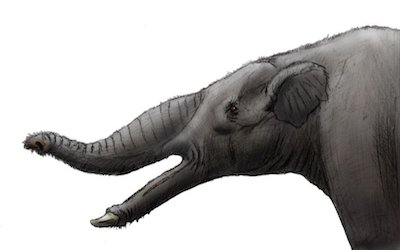随着PTE考生对PTE口语和PTE听力的重视,大家口语和听力的分数得到极大提高,但是PTE阅读渐渐成为考生们新的难题。墨尔本悉尼文波PTE特别为PTE考生们挑选了适合练习PTE阅读的文章,主题,内容,长度都与PTE阅读题中的文章相似。激活学过的词汇,更新新的词汇,提高阅读速度,全面提升自己的阅读能力。
If the saw-tusked elephants are known for anything, it’s their tusks. It’s right there in the title. How strange, then, that the latest addition to the family is missing a set of modified incisors that are ubiquitous among its relatives.
Many new fossil species come to us as fragments. Parts of skeleton or isolated teeth that represent something new, but not completely known. Not so with Aphanobelodon zhaoi. This 14 million year old elephant is represented by a set of near-complete skeletons from baby to adult, providing an unusually-detailed look at this extinct pachyderm.
Aphanobelodon means “invisible front tooth.” That’s because these elephants totally lacked upper tusks. They still had the long, shovel shaped mouths common to their family, but they’re unique in missing the distinctive upper ivory of beasts such as Platybelodon.
Why Aphanobelodon dropped the upper tusks isn’t clear. Whatever the reason, though, it seems that the change didn’t alter the elephant’s feeding style. Little scratches on the teeth of Aphanobelodon suggest this beast was a browser that fed on a variety of vegetation much like its cousin Platybelodon. Just imagine a herd of these ancient elephants lumbering through the forests, grasping branches with their trunks and slicing them up into more manageable pieces with their strange lower tusks before stuffing the salad into their mouths.
tusk: n. 长牙。
incisor: n. 门牙。
ubiquitous: adj. 普遍存在的。
pachyderm: n.迟钝的人,厚脸皮的人;厚皮类动物。
lumber: vi. 笨重的行走。
墨尔本悉尼文波PTE原创首发
更多精彩请持续关注微信wenbo_tv2。





